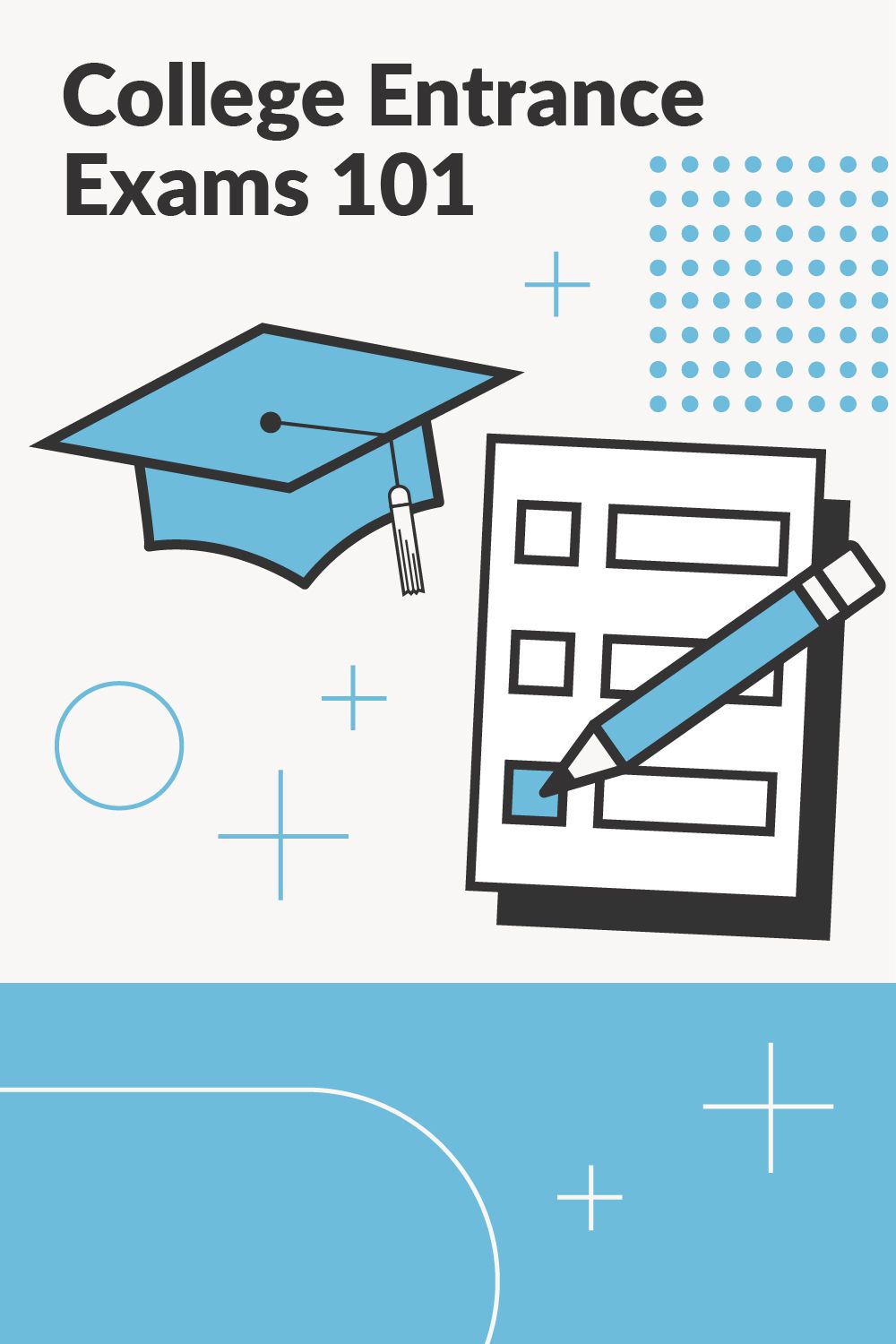
Congrats! If you’re reading this article, it’s likely because you’re starting to prepare for your college entrance exams. If you’re like I was in high school, you may have very little idea of what you’re getting yourself into. Rest assured, you’ve come to the right place!
A college entrance exam is a standardized test used to measure your college readiness. Apart from optional written essay portions, entrance exams consist of multiple-choice and fill-in-the-blank questions and focuses on reading, writing, math, and/or science. Each test requires a few hours to complete, with one or more breaks. Test results are then used by college admissions committees to gauge your skills in logic, reading comprehension, critical thinking, and problem-solving.
There are a few different tests you can take to enhance your college applications. While each exam type differs in some way, they all work toward the same goal: helping a school evaluate your educational background. To better understand which test is right for you and how to prepare for it, let’s dive into the many facets of college entrance exams!
Understanding College Entrance Exams
The College Board was founded in 1900 to organize the college admissions process used by colleges and universities across the U.S. At its founding, the Board had two distinct goals:
- It wanted to provide a forum for discussing issues related to college access and curriculum.
- It wanted to standardize the college admissions process.
The organization ultimately debuted the SAT in 1926, and other common entrance exams have come into use since then. Many schools today still rely on scores from these same entrance exams nearly 100 years later.
Common Entrance Exams
The two most often-used college entrance exams are the SAT and the ACT. Colleges may accept either score to assess an applicant’s eligibility for admission and merit-based scholarships, but the two tests differ in numerous ways. Here’s an overview of how they compare:
Header | SAT | ACT |
|---|---|---|
Test Subjects |
|
|
Length | 180 minutes | 175 minutes without essay; 220 minutes with essay |
Test Sections |
|
|
Scoring | Scale of 400-1600 | Scale of 1-36 |
Many students end up taking both tests given their similar content and scale. This can be helpful for a few reasons:
- Submitting scores from both tests gives admissions offices more information to make a sound decision, and more information is better in this case.
- It increases your chance of receiving merit-based financial aid, either from the college itself or from an external source.
- Taking both tests creates more flexibility in choosing testing dates and opens up your options for schools you can apply to.
Beyond the SAT and ACT, the Classic Learning Test (CLT) is a newer option available to students. Created in 2015, the CLT’s founder wanted to “provide alternative standardized tests rooted in tradition and taking advantage of modern technologies.” With the goal of helping students “become better human beings,” the CLT is accepted by over 250 colleges.
The test takes two hours to complete and includes questions related to verbal reasoning, grammar, writing, and quantitative reasoning. Like the ACT, the essay portion of the CLT is optional and adds 30 minutes to the total test time.
Average 2022 SAT score: 1050 (on a scale of 400-1600)
Average 2022 ACT score: 19.8 (on a scale of 1-36)
2023 Percentiles For SAT Section Scores*
Percentile | Total Score | Reading and Writing | Math |
|---|---|---|---|
99% | 1490 | 730 | 760 |
90% | 1300 | 650 | 650 |
75% | 1160 | 585 | 575 |
50% | 1010 | 505 | 505 |
25% | 875 | 435 | 440 |
*Section scores are approximate based on SAT percentiles found here.
2023 Percentiles For ACT Section Scores*
Percentile | Total Score | Reading and Writing | Math | Reading | Science |
|---|---|---|---|---|---|
99% | 35 | 97 | 99 | 96 | 99 |
90% | 28 | 88 | 92 | 84 | 91 |
75% | 23 | 76 | 76 | 70 | 75 |
50% | 19 | 53 | 58 | 46 | 47 |
25% | 14 | 34 | 21 | 27 | 21 |
* Section scores are approximate based on ACT percentiles found here.
Preparation and Timing for College Entrance Exams
Regardless of which test you choose to take, knowing how to properly prepare for it and manage your time can mean a world of difference in the outcome.
Test Prep
- Get started with the right materials. Request a test prep guide from your school or purchase one online. Make sure your guide has at least two full sample tests to practice with.
- Register for your test date. Visit the exam’s official website to schedule your test date and location.
Give yourself enough time to study. Build a plan to study for three to five hours each week, starting three to six months prior to your test date, at least. - Consider alternative study methods. Study with a friend group, hire a private tutor, or work with a test prep company.
- Simulate the testing environment. I highly recommend that you simulate the test environment you will be in by running timed practice tests in a quiet room. This can help you get comfortable with performing under pressure.
- Learn a few stress management techniques. The testing environment can feel unnatural and, as a result, cause your nerves to spike. Find easy ways to calm your mind, like closing your eyes and counting to 10, chewing gum, or using the 4-7-8 breathing technique.
Time It Intelligently
Time is important for college entrance exams in two main ways. First how far in advance you should test? That depends on a variety of things, including where you apply to college, what your admission cutoff dates are, and whether you want to allow time to retest if needed.
Most colleges have an offer acceptance deadline of May 1, referred to as the “regular decision deadline,” though many schools also have an “early” decision cutoff the previous fall season for students who have their heart set on a specific school. This means you need to schedule your exam far enough in advance to allow time to test and submit your full college application. You'll want to test least three months ahead of your desired college’s application deadline.
The second important time factor is, of course, managing your time in the testing room once the test date arrives. You want to arrive prepared for your big day. That may include wearing a silent wristwatch and being highly familiar with the exam format. But beyond that, keep in mind that different sections of the exam have different levels of difficulty, so don’t spend the same amount of time on each question.
Most importantly, be sure to use all the time you’re given. If you finish a section early, take the extra time to glance back over your answers, especially any you feel unsure of.
Familiarizing yourself with your test’s timing in advance will help you better budget your time come test day. Here’s a general breakdown of the two main tests’ respective structures:
Structure of the SAT
Component | Number of Questions | Time Allotted (Minutes) |
|---|---|---|
Reading | 52 | 65 |
Writing and Language | 44 | 35 |
Math | 58 | 80 |
Structure of the ACT
Component | Number of Questions | Time Allotted (Minutes) |
|---|---|---|
English | 75 | 45 |
Math | 60 | 60 |
Reading | 40 | 35 |
Science | 40 | 35 |
Writing (optional) | One essay | 40 |
Relax a Little
Your test score can take anywhere from one to three weeks to arrive after your test date.
Before you click that link in your email or log in to check your score, take a deep breath. Did you work hard to prep for your test? Yes. Have you been lying awake at night wondering how you did? Perhaps. This is the moment of truth — but keep in mind that your score isn’t the sole factor deciding your fate in the college admissions process.
Are College Entrance Exams Always Required?
There are times when a college may not require you to submit exam scores. Referred to as “test-optional” schools, these colleges allow applicants to forgo submitting standardized test scores with their applications. This is sometimes only offered to students who meet certain GPA or class rank requirements; at other times, all students may opt out of submitting test scores.
If your desired school is test-optional, consider these alternative ways of bolstering your admissions application:
Strengthen your GPA. Your high school GPA sends a clear message to an admissions committee about how academically equipped you are, and it will be used to rank you among other applicants. A higher GPA can put you in the running for merit-based scholarships, so it’s something you’ll want to focus on while you can.
Enhance your extracurriculars. Noteworthy extracurricular activities communicate your commitment to life and hobbies outside of school, demonstrating that you can balance your academic workload with personal responsibilities. Though extracurriculars weigh less on your admissions decision than your GPA or test scores, they can indicate your attainment of soft skills, which are critical to successfully navigating your college experience.
Summary
The SAT and the ACT are the two most popular college entrance exams used to complement your admissions application. While not every school requires that you take these tests, they can be important indicators of your analytical ability and predictors of your academic success.
As you start thinking about college, create a timeline to help keep you on track, including test prep, exam registration, and submitting your college application forms. Graduation day will be here before you know it!

Allison’s passion lies in decoding the ways of the world to help put others on a path to success. She likes to ask big questions, and it’s her goal to find answers to share with you. A self-acknowledged transplant to the Pacific Northwest, Allison likes to write about finance, policy, fitness, and anything else that sparks her curiosity.
Editor: Ashley Barnett Reviewed by: Robert Farrington
